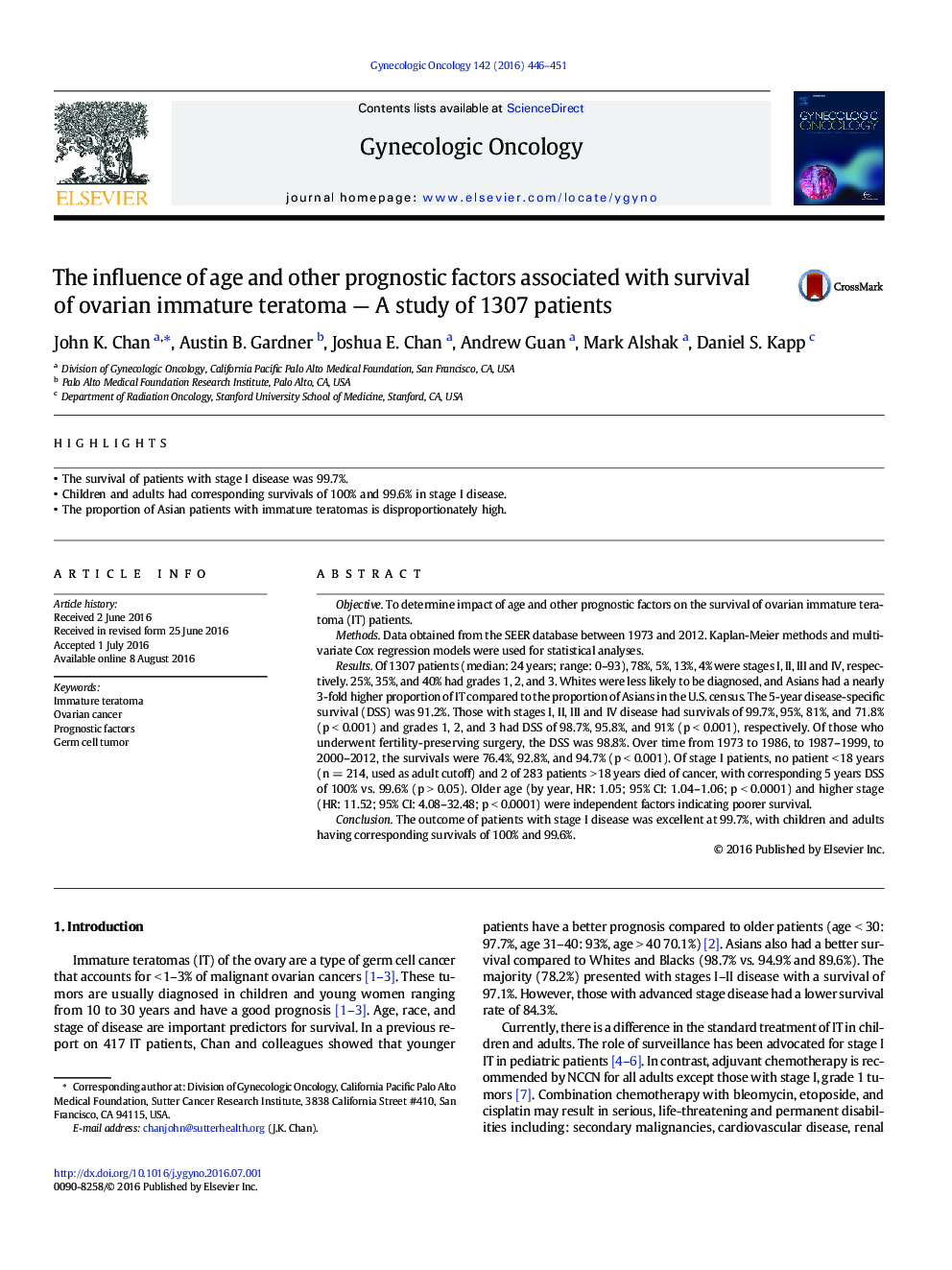| Article ID | Journal | Published Year | Pages | File Type |
|---|---|---|---|---|
| 6182971 | Gynecologic Oncology | 2016 | 6 Pages |
â¢The survival of patients with stage I disease was 99.7%.â¢Children and adults had corresponding survivals of 100% and 99.6% in stage I disease.â¢The proportion of Asian patients with immature teratomas is disproportionately high.
ObjectiveTo determine impact of age and other prognostic factors on the survival of ovarian immature teratoma (IT) patients.MethodsData obtained from the SEER database between 1973 and 2012. Kaplan-Meier methods and multivariate Cox regression models were used for statistical analyses.ResultsOf 1307 patients (median: 24 years; range: 0-93), 78%, 5%, 13%, 4% were stages I, II, III and IV, respectively. 25%, 35%, and 40% had grades 1, 2, and 3. Whites were less likely to be diagnosed, and Asians had a nearly 3-fold higher proportion of IT compared to the proportion of Asians in the U.S. census. The 5-year disease-specific survival (DSS) was 91.2%. Those with stages I, II, III and IV disease had survivals of 99.7%, 95%, 81%, and 71.8% (p < 0.001) and grades 1, 2, and 3 had DSS of 98.7%, 95.8%, and 91% (p < 0.001), respectively. Of those who underwent fertility-preserving surgery, the DSS was 98.8%. Over time from 1973 to 1986, to 1987-1999, to 2000-2012, the survivals were 76.4%, 92.8%, and 94.7% (p < 0.001). Of stage I patients, no patient < 18 years (n = 214, used as adult cutoff) and 2 of 283 patients > 18 years died of cancer, with corresponding 5 years DSS of 100% vs. 99.6% (p > 0.05). Older age (by year, HR: 1.05; 95% CI: 1.04-1.06; p < 0.0001) and higher stage (HR: 11.52; 95% CI: 4.08-32.48; p < 0.0001) were independent factors indicating poorer survival.ConclusionThe outcome of patients with stage I disease was excellent at 99.7%, with children and adults having corresponding survivals of 100% and 99.6%.
